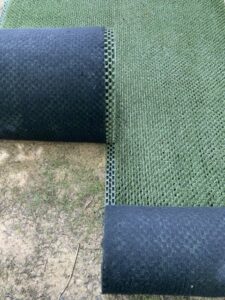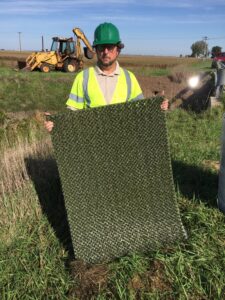Hillside Erosion Control Products
Hillside Erosion Control: Advanced Solutions for Steep Slopes
When it comes to managing hillside erosion, selecting the right erosion control products for your project is crucial for maintaining the stability and health of your environment. Hillside erosion can lead to significant soil loss, water pollution, and decreased functionality of your landscape.
Immediate Armoring
>3x Erosion Protection
Simple Installation
Aesthetically Pleasing
50%+ Typical Cost Savings
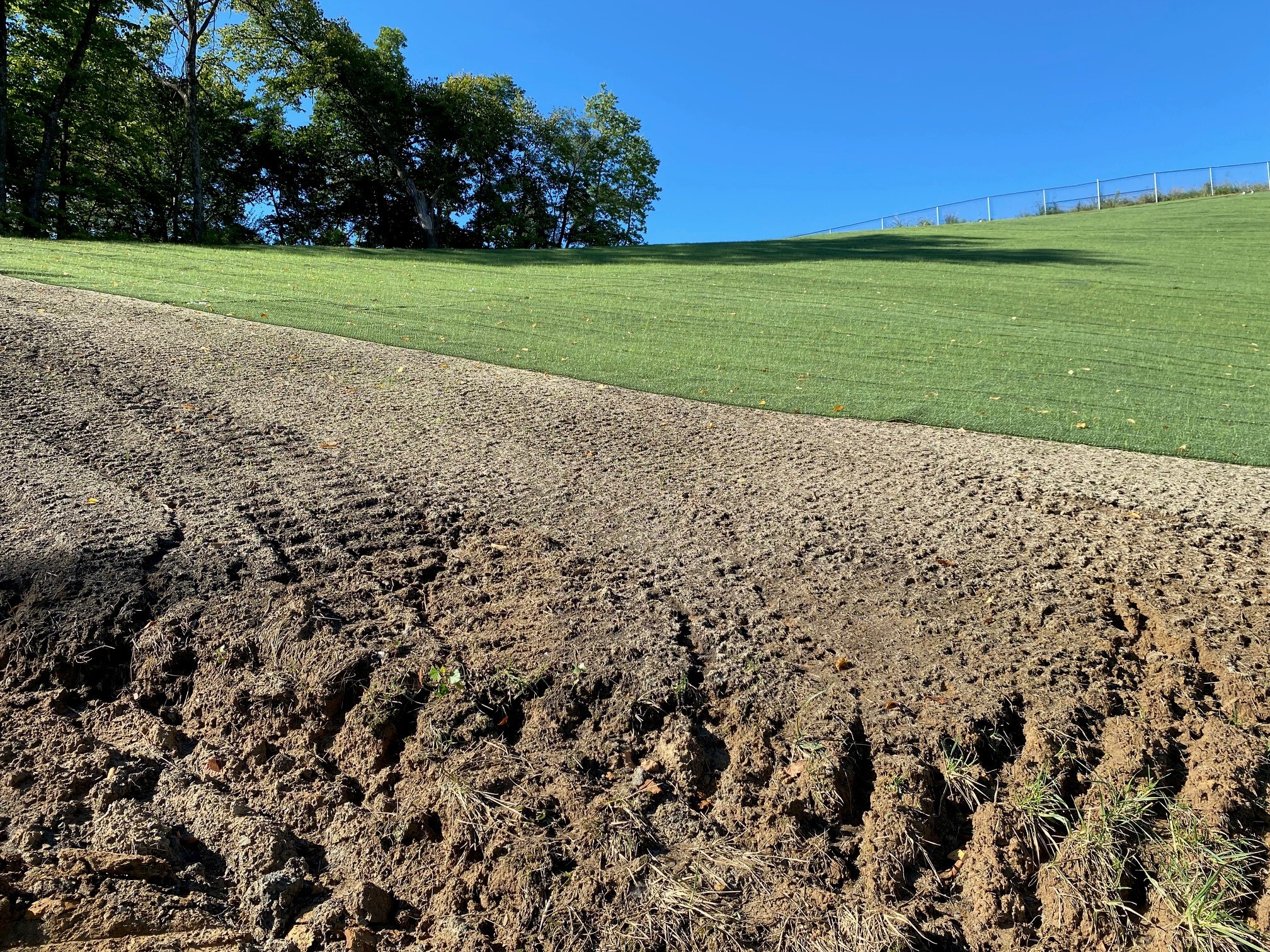
Understanding Hillside Erosion and Its Impact
Hillside erosion control is important for maintaining soil stabilization and preventing the loss of valuable land. When steep slopes are left unprotected, the forces of water flow and gravity can cause soil particles to dislodge and move downhill, causing severe soil erosion.
This process not only threatens the structural integrity of the landscape but also leads to sediment accumulation in waterways, contributing to water pollution.
What Causes Steep Slope Erosion
- Water Runoff: Water runoff remains the most significant driver of steep slope erosion. The intensity of runoff on slopes increases as water flows downhill, picking up speed and volume. According to studies by the United States Department of Agriculture (USDA), slopes with gradients greater than 15% experience accelerated erosion due to the kinetic energy of flowing water. The erosive power of runoff is amplified during heavy rainfall events, where rainfall intensities surpass the soil’s infiltration rate, or during rapid snowmelt periods. Hydrological models, such as the Universal Soil Loss Equation (USLE), quantify this process, illustrating that even minor increases in slope gradient or rainfall intensity can significantly escalate soil erosion.
- Lack of Vegetation: Vegetation plays a pivotal role in stabilizing slopes, with root systems acting as natural reinforcements. The removal or absence of vegetation, particularly deep-rooted species, drastically increases erosion susceptibility. Studies from the Journal of Geophysical Research indicate that areas with vegetative cover have 70-90% lower erosion rates than barren slopes.
- Soil Composition and Structure: Soils that are sandy or have a high silt content are more susceptible to erosion than those with a mix of sand, silt, and clay. Additionally, loose soil that lacks organic matter may not hold together well, making it more prone to being washed away.
- Wind Erosion: On exposed slopes, wind erosion can strip away the fertile topsoil, particularly in arid and semi-arid regions. The phenomenon, known as deflation, can lead to soil degradation over time. Wind tunnel experiments have demonstrated that wind speeds exceeding 5 m/s can initiate soil particle movement, with the rate of erosion increasing exponentially with wind speed. In the absence of natural barriers, such as vegetation, wind erosion can account for up to 40% of total soil loss on steep slopes.
- Gravity: Gravity-driven processes, collectively known as mass wasting, contribute significantly to steep slope erosion. This includes soil creep, landslides, and rockfalls. According to the United States Geological Survey, landslides alone cause over $3.5 billion in damages annually in the United States. These processes are often triggered or exacerbated by water infiltration, which reduces soil cohesion and increases the weight of the slope, leading to slope failure.
- Human Impact: Human activities, such as construction, road building, and deforestation, significantly disrupt the stability of slopes. These activities often remove protective vegetation, alter drainage patterns, or add weight and alter the natural angle of repose of the slope, increasing erosion risks. Studies from the Journal of Environmental Management highlight that road construction on steep slopes can increase erosion by up to 500% due to increased runoff and slope destabilization.
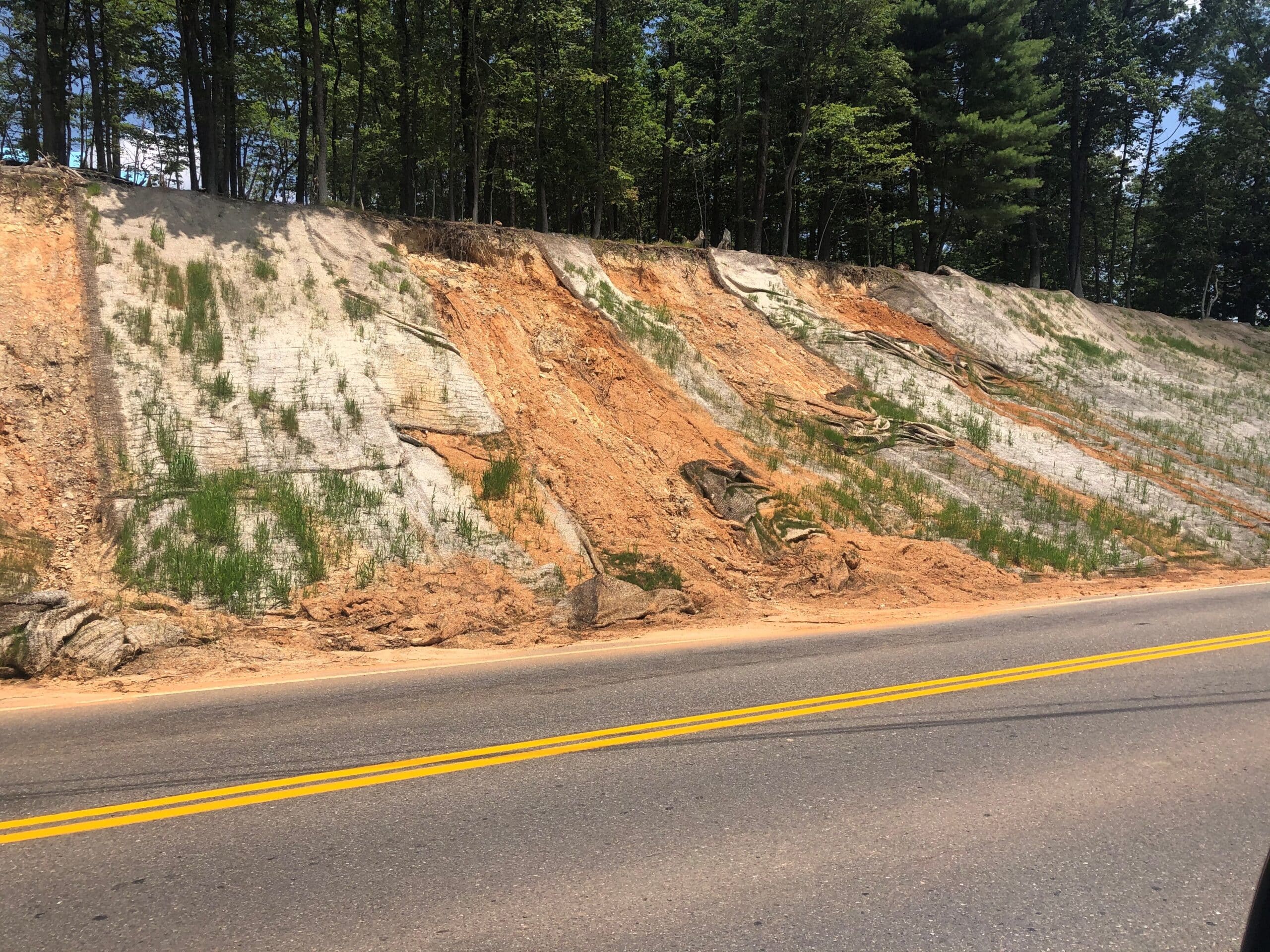
Why Is Hillside Erosion a Problem
Hillside erosion can lead to extensive environmental and infrastructural damage, including loss of valuable land, decreased slope stabilization, and increased sediment in water systems, which can harm aquatic life and reduce water quality.
Our InstaTurf erosion control product is designed to prevent such outcomes by providing a durable foundation for vegetation growth, effectively anchoring soil, and protecting against water and wind erosion.
Limitations of Traditional Erosion Prevention Methods
Rock Riprap
- Erosion control methods like rock riprap, although effective at preventing erosion, are expensive, labor-intensive, and do not support vegetation, which can lead to stark, unnatural landscapes. Rock riprap requires heavy machinery for loading, transporting, and unloading, increasing labor and costs during the installation process. With InstaTurf, our streamlined installation process means no damage to your trucks during transportation and no harm to the property when deploying our premium erosion protection solution on your hillside.
Other Traditional Methods
- Traditional erosion prevention methods like straw wattles, silt fences, and landscape fabric often fall short in long-term effectiveness and environmental sustainability. Straw blankets and wattles, though useful for temporary stabilization, degrade over time and fail to support vegetation growth, which is crucial for sustainable soil health. Silt fences, common for sediment control, can easily be overwhelmed by heavy runoff if improperly installed, leading to potential breaches and environmental impact. Landscape fabrics suppress weeds but do not adequately secure soil against erosion, nor do they promote natural vegetation growth. These limitations highlight the need for more durable, ecologically friendly, and effective solutions in erosion control technologies.
InstaTurf: Innovative Erosion Control Measures for Hillside Stability
InstaTurf's innovative erosion control solutions are designed to tackle the challenges of hillside erosion, offering immediate stabilization, rapid vegetation support, and cost-effectiveness. This makes InstaTurf an ideal choice for civil engineers, project managers, developers, and land owners seeking efficient, durable, and environmentally friendly options for slope erosion control.
Schedule a design review
Don’t let erosion control become a burden. Choose InstaTurf and experience immediate erosion prevention, rapid vegetation growth, cost-effectiveness, and hassle-free installation. Protect your natural resources, enhance your shoreline, and ensure the longevity of your project with InstaTurf erosion control measures.
InstaTurf Products
ShearForce™10
Flexible erosion control suitable for most applications. SF10 is lightweight and provides immediate soil protection upon installation.
ShearForce™12
Superlative soil protection made to withstand turbulent water flow in areas such as culvert and pipe outfalls. SF12 provides a weighted ballast to ensure high performance in the most demanding applications.
RECEIVE A CUSTOM QUOTE
Learn More About InstaTurf On Our Blog

Redefining Solar Siting: How InstaTurf® Leads the Way in Sustainable Development
As solar energy accelerates towards a carbon-neutral future, innovative solutions are essential for harmonizing energy production with environmental stewardship. Discover how InstaTurf® is redefining solar siting with groundbreaking products like ShearForce hybrid-turf instant armor mats, designed to combat erosion while promoting vegetation growth. Explore the transformative potential of agrovoltaics and ecovoltaics, and learn about initiatives like the 11-State Western Solar Plan that pave the way for sustainable solar development. Join us in shaping a future where clean energy and ecological preservation thrive together, ensuring a resilient and sustainable landscape for generations to come.
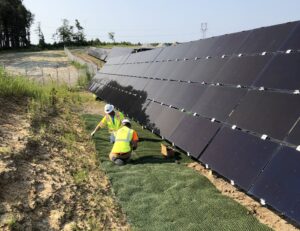
Dripline Dilemmas: How Leading States Are Shaping Erosion Control for Solar Farms
The guidance and regulations for managing dripline erosion on solar farms varies significantly from state to state. Use this as an overview and repository for links to the guidance you need to be aware of for your site.
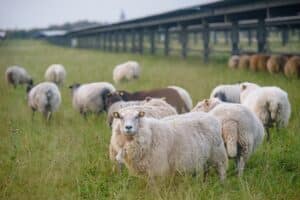
The Growing Demand for Agrivoltaics and the Role of InstaTurf® in Erosion Control on Solar Farms
Discover the innovative world of agrivoltaics, where solar power meets sustainable agriculture! As the demand for clean energy rises, the integration of solar farms with farming practices is becoming a game-changer for land use and food security. However, soil erosion poses a significant challenge. Enter InstaTurf, offering cutting-edge erosion control solutions that not only stabilize soil but also promote healthy vegetation and support livestock grazing. Learn how these vital products are transforming agrivoltaic systems into thriving ecosystems that balance energy production with agricultural productivity, ensuring a sustainable future for both our planet and its farmers.

